An interesting arctic phenomenon that many of us are noticing is the absurdity of the dreams one navigates each night. They've served as excellent lunchtime conversation reminding us that either none or all of us are 'normal.' Having ventured to the Canadian arctic years earlier I am beginning to remember similar experiences. Just last night I was pleased to say hello to my brother briefly as he happily navigated his way down Linneelva (the meltwater stream draining our glacier) in an apparently aquatically capable 1986 Dodge Caravan, complete with missing windshield and imitation wood banding running the side. His parking job was less than stellar in front of our stream gauging site and I commented as such before the alarm woke me at 6:30 am…coffee, yes indeed.
Today would be a lecture day for those in AG212 course based out of the conference room in the Isfjord Radio main building while the REU crew would hit the lake for a 2/3 day. Our first objective upon hitting the lake shore was to retrieve one more buoy, a short one that we found in short order. Then it was on to the south shore to first service the weather station proper then complete a bit of work at the gauging station followed by a half an hour's hike toward the glacier on Linneelva.
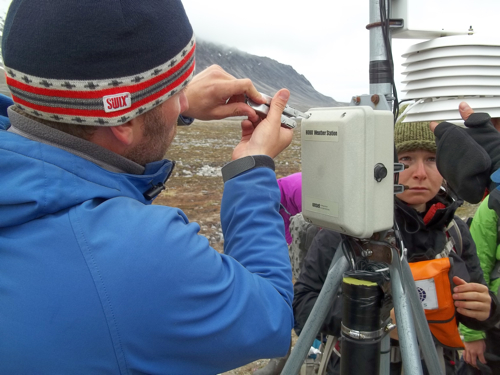
At the weather station we installed some super lithium-ion AA batteries in hopes they'd keep chugging for an extended period of time given the addition of some new and recently dried desiccant bags (do not eat). Along with atmospheric temperature, windspeed and direction, precipitation, solar insolation, ground reflectivity, and barometric pressure, the weather station has two ground temperature probes buried 0.5 and 1 meter down in the soil. We can accordingly look at the interactions between the atmosphere and the active layer of the permafrost over time. Another interesting feature of the weather station is the barometric pressure sensor which comes in handy for calibrating some of our other measurements over within Lake Linne. In the lake we have some pressure sensors that are used to monitor the level of the lake. They area tethered to the mooring strings of probes and what not and record how much water is overhead of the sensor (anyone who's dove to the bottom of a pool knows just how that pressure feels on their ears!). By using the barometric pressure at the weather station the data then can be corrected for changes in atmospheric barometric pressure that would press down upon the lake surface and thus alter the pressure sensor's readings erroneous to lake level changes.
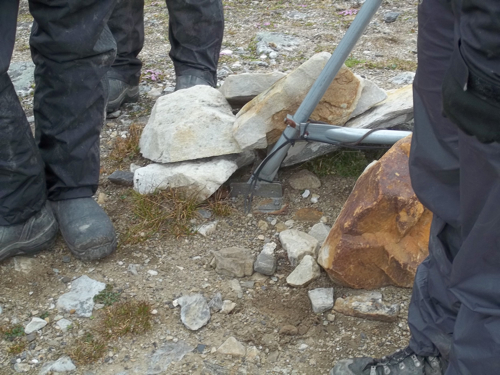
With the weather station serviced we headed toward the glacier along Linneelva until the stream gauging station for lunch. While we ate John dutifully donned the survival suit and set to replacing our stream temperature gauge now that the data was downloaded back at Isfjord Radio. Lunch was delicious as ever (anything tastes great in the field) and the conversation was lively as I previously mentioned. Turns out none of us are normal…
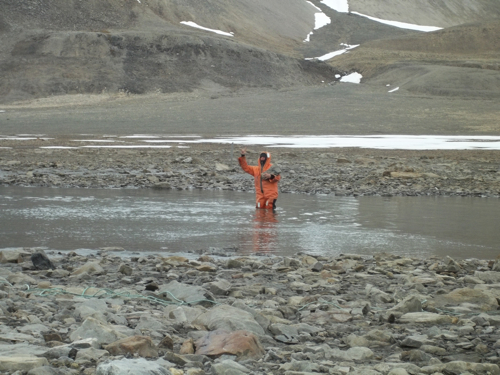
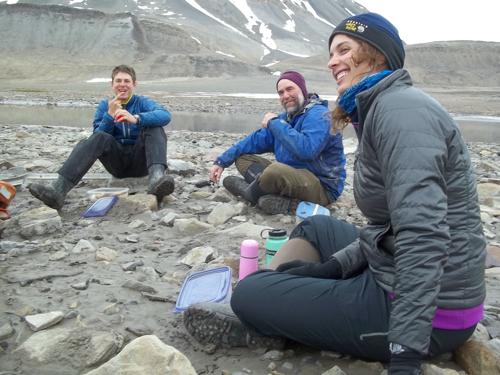
We then hiked for a bit upstream to accomplish three tasks: 1. Install our level logger which is a tool similar to the pressure sensors in the lake that records the level of Linneelva 2. Retrieve a higher stream temperature probe and 3. Gather our probes from something called a snow tree which has light sensitive probes at various heights looking down to gauge snow depth. Cue Meatloaf "two out of three…"
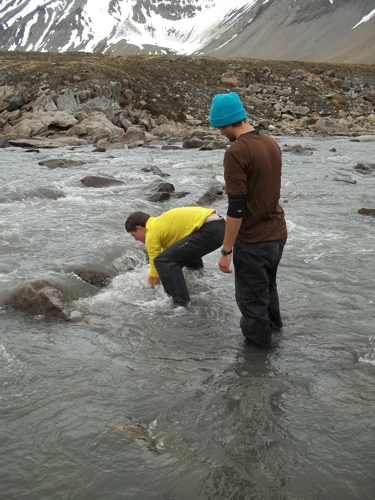
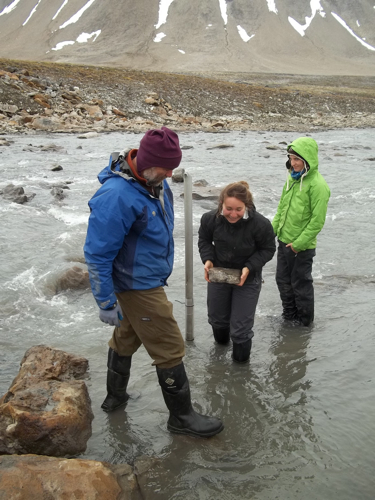
Our level logger went it just fine and the snow tree was no problem but we had some trouble finding our large rock in the stream with the temperature probe. 99% of the time the rocks are found no problem but you never know when a slush flow could have just enough force to alter the location of such instrumentation. After a valiant effort and many of us getting cold and wet we decided to return on either a sunnier day or a time when the stream level was down.
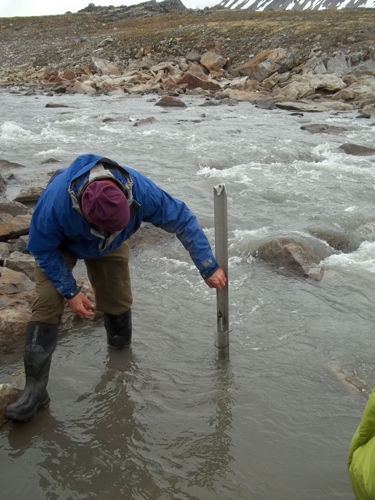
On the hike out I was again amazed by just how active the ground is beneath your feet here in the continuous permafrost zone. I remarked to Mike that I couldn't believe how you can go to an environment that one might think should be simple (no trees, limited biodiversity in your face, rocks, glaciers, and water) and be so constantly prompted to figure out the complex interactions taking all around you. Please forgive me for posting more patterned ground pictures but they are so darn cool. There are rows and rows of large angular rocks corralled together with finer muds and pebbles flowing between them downslope.

In the individual 'lanes' of mud and pebbles you can see how the ripples running perpendicular to the flow of the solifluction are bent by the friction of the less active rock row boundaries. See in the picture below how they make beautiful parabolas, concave down, above my winter hat.
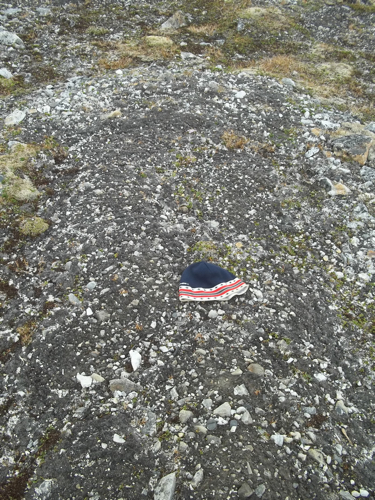
After regaining my emotions from the patterned ground walk out (sounding more like Robert than Dan Frost) we took the zodiacs for a good 'ole fashioned rip across the lake on the first ever voyage manned by Capt. Obermeyer. Check the picture for 'stoke-level.'
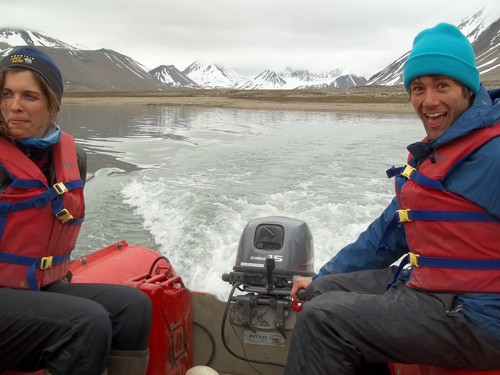
The lake surface was glassy and we lamented we weren't sediment coring today though it would soon be on the list (drill-baby-drill? core-baby-core!). Tomorrow looks like a metric marathon out to the glacier (26 km of hiking!) and a bit of rest on Friday. Day 8 in a row in the field, check.



Comments